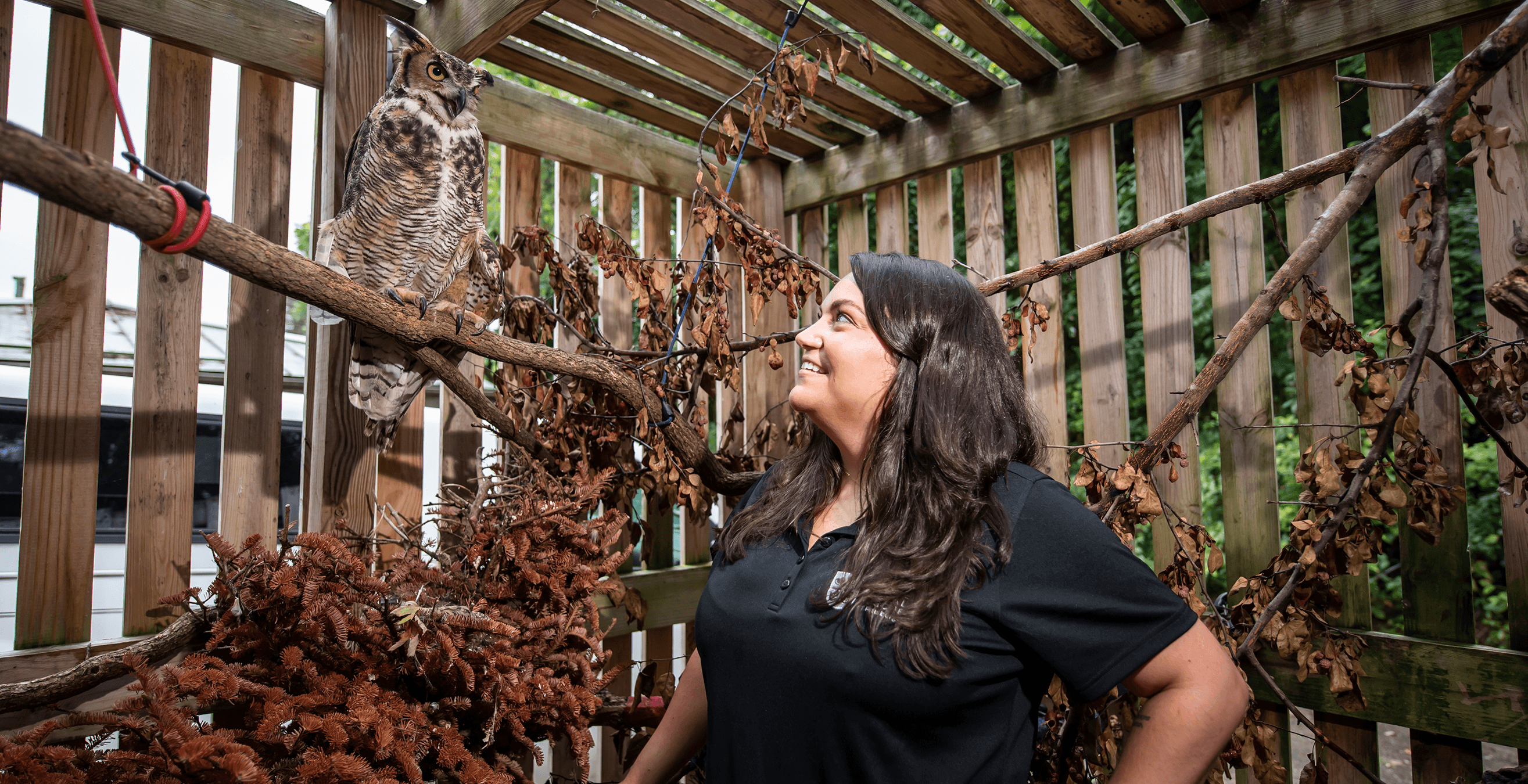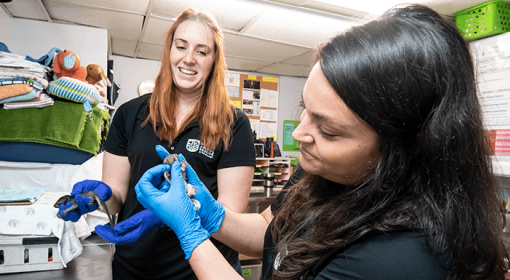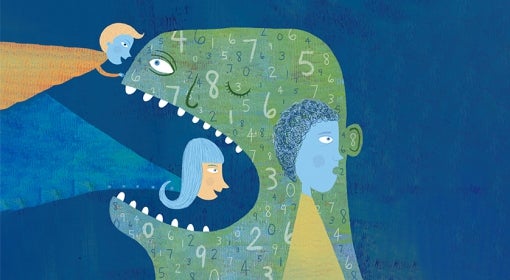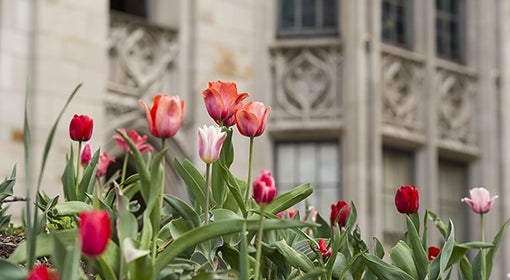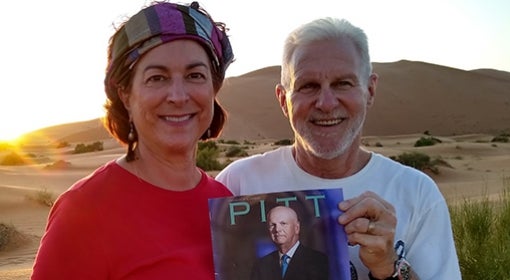Every year, while winter tiptoes into spring, Katie Kefalos prepares for the arrival of hundreds of babies to her office in Verona, Pennsylvania. She and her colleagues stock up on supplies they will most need: towels, plush toys, heat lamps, peanut butter. . . Before they know it, injured, sick or abandoned young critters — from groundhogs and bunnies to songbirds and bats — will arrive to receive the refuge and care they need to grow, heal and be released back into nature.
Though patients arrive all-year round, spring (or “baby season”) is the busiest time at the Humane Animal Rescue of Pittsburgh’s Wildlife Rehabilitation Center. As the director of wildlife rehabilitation, Kefalos’ job is to provide the medical services the animals require, all while keeping them as wild as possible.
“We definitely don’t want them getting used to people,” she says.
She and her team create environments for each animal that mimics their natural habitats as closely as possible: Skunks and groundhogs forage in large dig pans filled with dirt, native plants and bugs, while bird species like blue jays hang out on fresh branches dotted with wild berries. In these settings, patients can pick up the survival skills and instincts they’ll need to thrive in the real world.
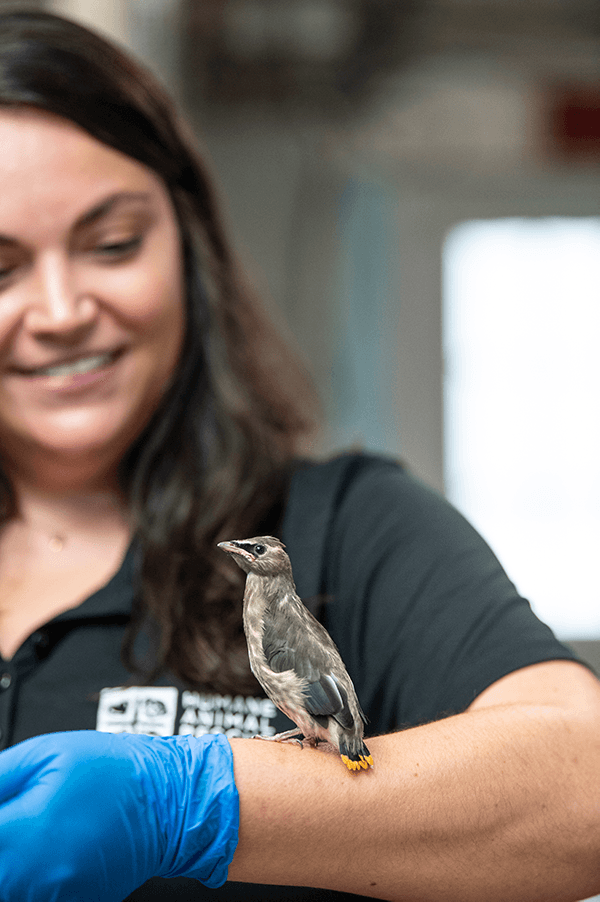 Working with non-domesticated animals has been the Pittsburgh native’s ambition since she was 8 years old and first attended Zoo Camp at the Pittsburgh Zoo and PPG Aquarium. After viewing a shark feeding, Kefalos remembers thinking, “This is it. This is so cool.”
Working with non-domesticated animals has been the Pittsburgh native’s ambition since she was 8 years old and first attended Zoo Camp at the Pittsburgh Zoo and PPG Aquarium. After viewing a shark feeding, Kefalos remembers thinking, “This is it. This is so cool.”
From then on, her infatuation with wild animals guided her dreams for the future and eventually led her to the University of Pittsburgh, where she studied biology with an emphasis on ecology and evolution. While earning her degree, she also interned at the zoo.
After graduation, as she looked for a job in her field, Kefalos (A&S ’12) started volunteering at the Wildlife Center, hoping to gain experience healing members of Western Pennsylvania’s native animal population — work that differed slightly from her experience at the zoo. There, residents are “still very much wild animals,” Kefalos says. But because, for one reason or another, zoo residents cannot be released into the wild, the animals must habituate themselves to interactions with humans, unlike most patients at the Wildlife Center, where Kefalos soon transitioned into the position of wildlife rehabilitator.
There are some permanent residents under her care at the center who, like their zoo counterparts, are unable to survive in the wild. They serve as educational animal ambassadors and sometimes even foster parents to the center’s young patients. The ambassador menagerie includes turkey vultures Sid and Vincent; Stinky Pete the common musk turtle; and Martha the Great Horned Owl.
Even though most of the center's patients and residents are not endangered, “Every native species, no matter how small, is crucial to making the ecosystem work properly,” Kefalos explains. And because 90% of patients visit the Wildlife Center as a result of negative human interaction, she believes that correcting humans’ damaging impact on our nonhuman neighbors is vital work.
Although the length of a patient’s stay depends on the species and each individual’s needs, for most, the time eventually comes to be released back into the wild. Kefalos says this is the best part of her job. “It’s really nice to be able to take something that was abandoned or got hit by a car and to see that bird fly again, or that squirrel run up the tree, or that fox run into the shrubbery.”
And while the center has no way of tracking released patients, Kefalos is hopeful that in returning to their natural environments, they’re finally able to live life as they’re supposed to: wildly.
Wild Work
Pitt Magazine caught up with alumnae Kefalos and Colleen Dougherty (A&S ’15) at the Wildlife Rehabilitation Center in Verona, Pennsylvania, where they introduced us to some of their patients.
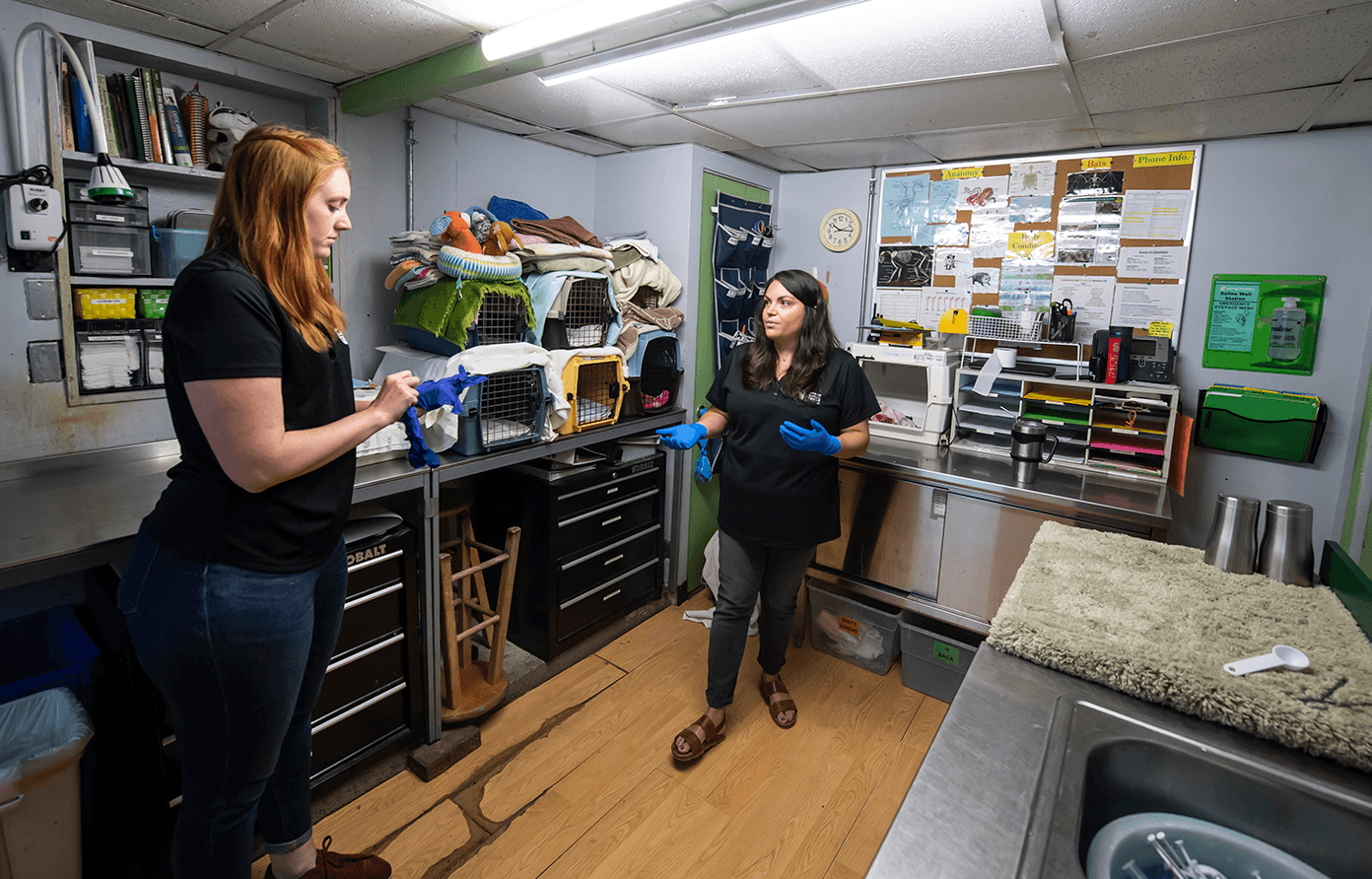
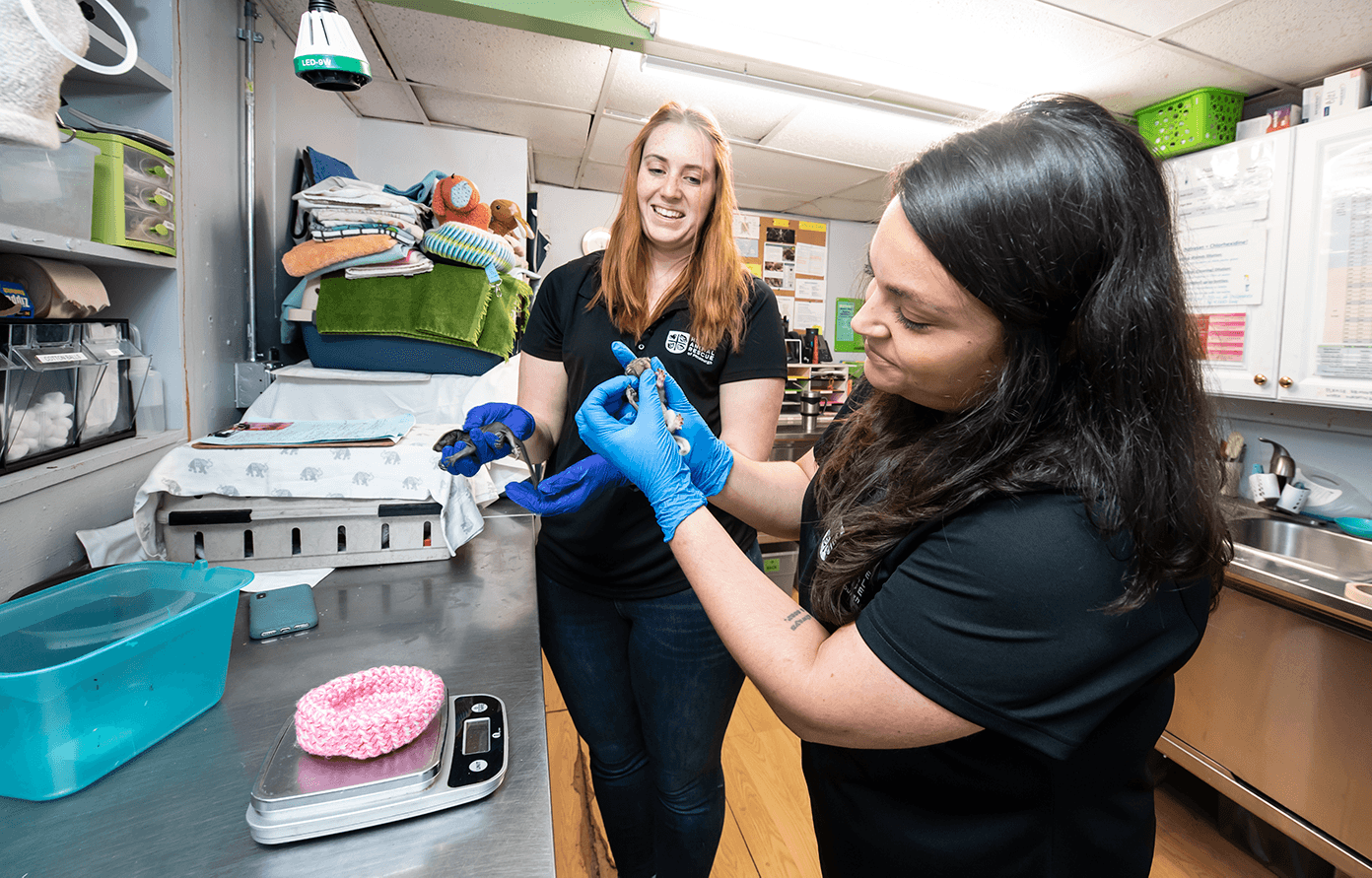
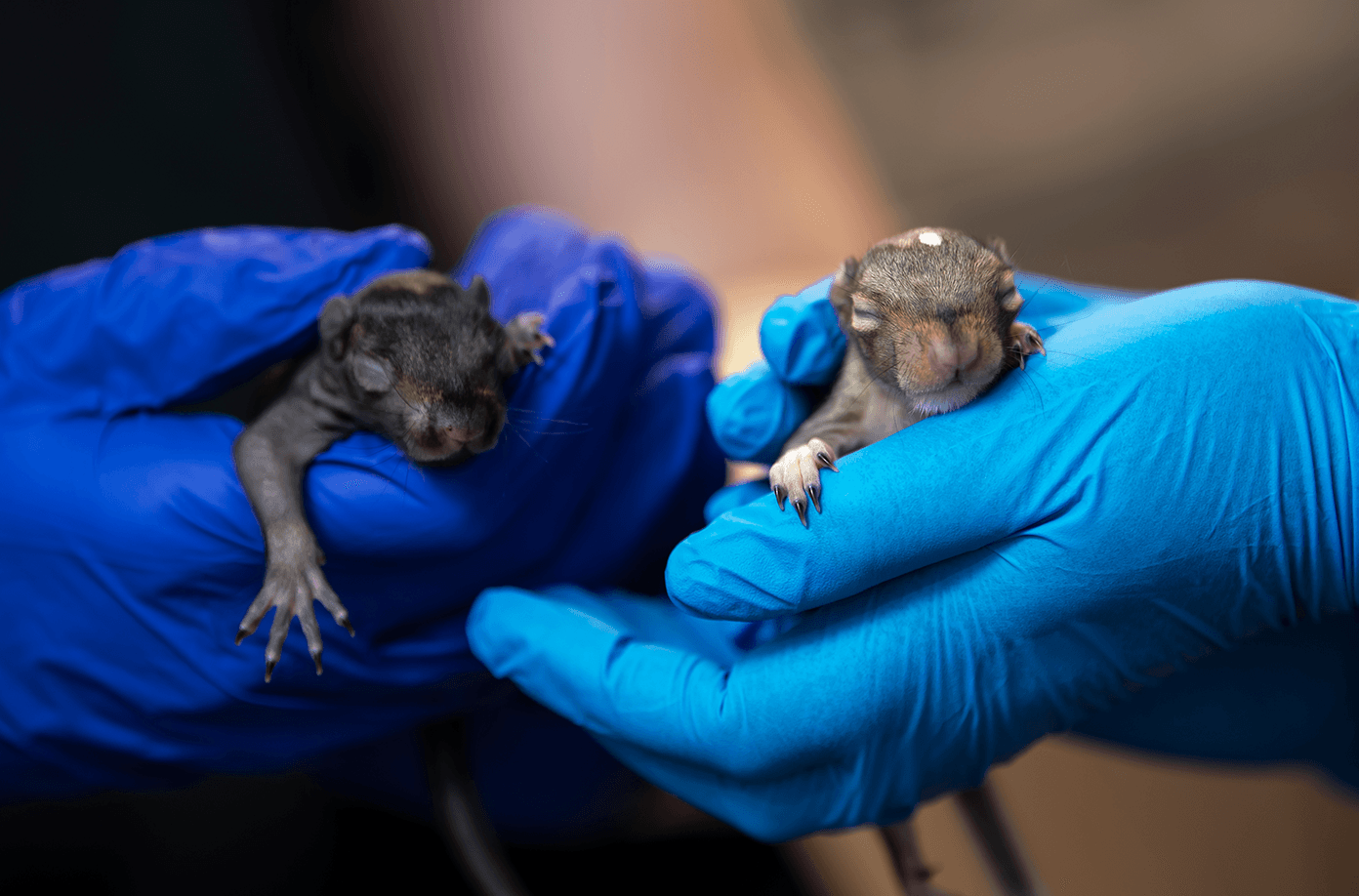
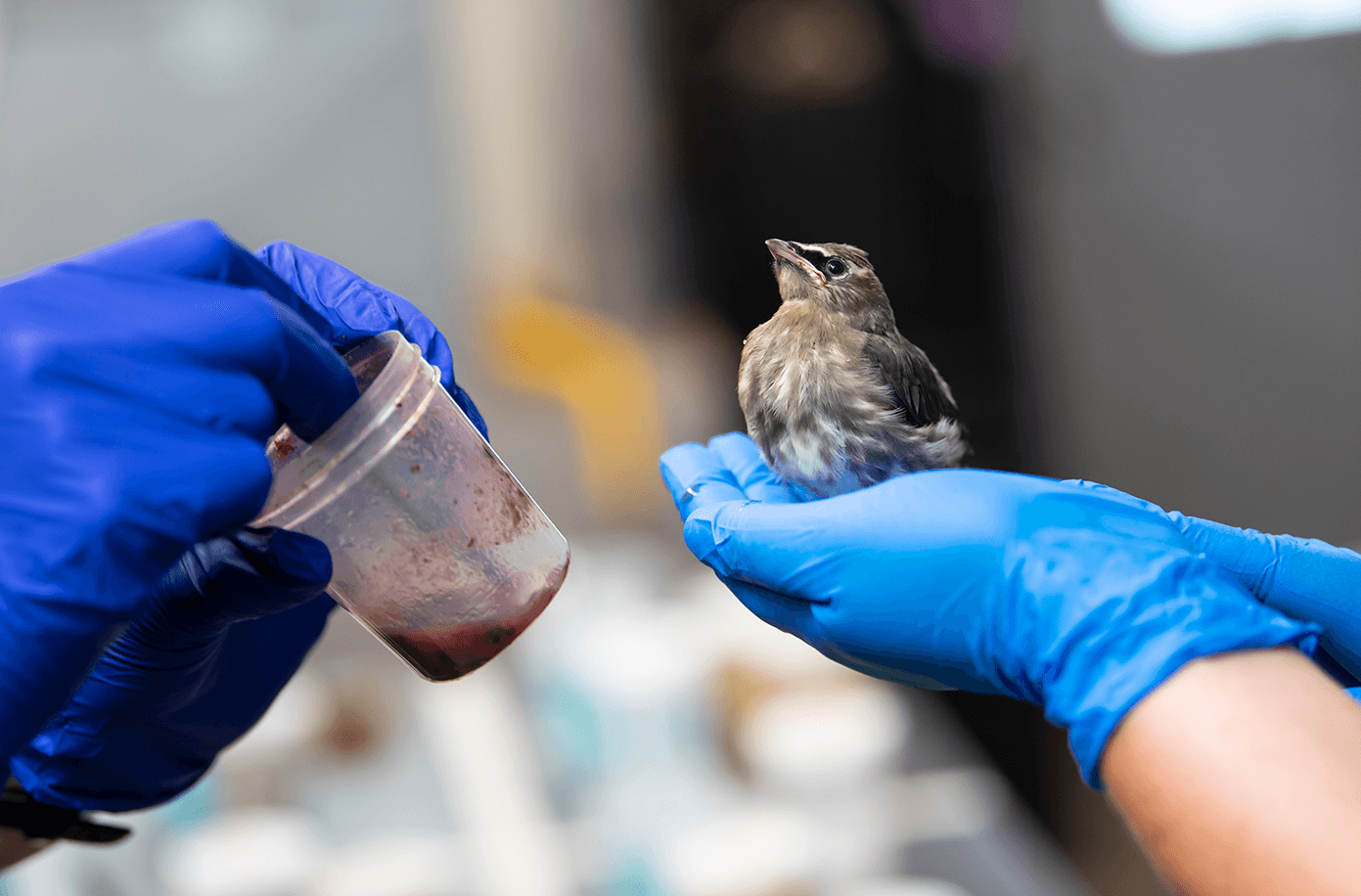
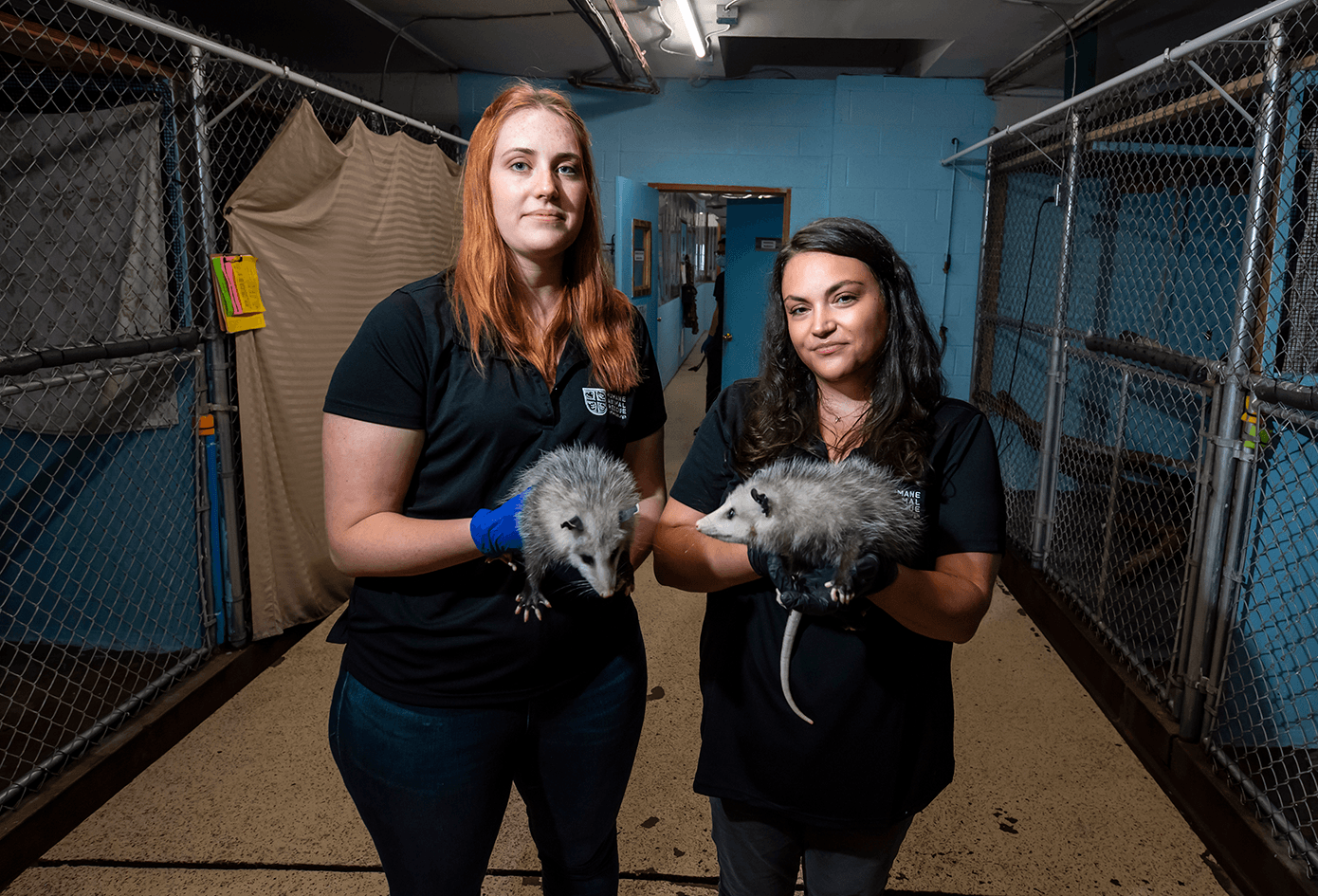
Keep up with Kefalos, Dougherty and the rest of the crew at the Wildlife Center by following Irwin the Porcupine (irwintheporcupine) on Instagram.
Cover image: Katie Kefalos hangs out with Martha the Great Horned Owl, one of the residents at Humane Animal Rescue of Pittsburgh's Wildlife Rehabilitation Center.
This story is part of Pitt Magazine’s special Summer ’21 digital issue.

